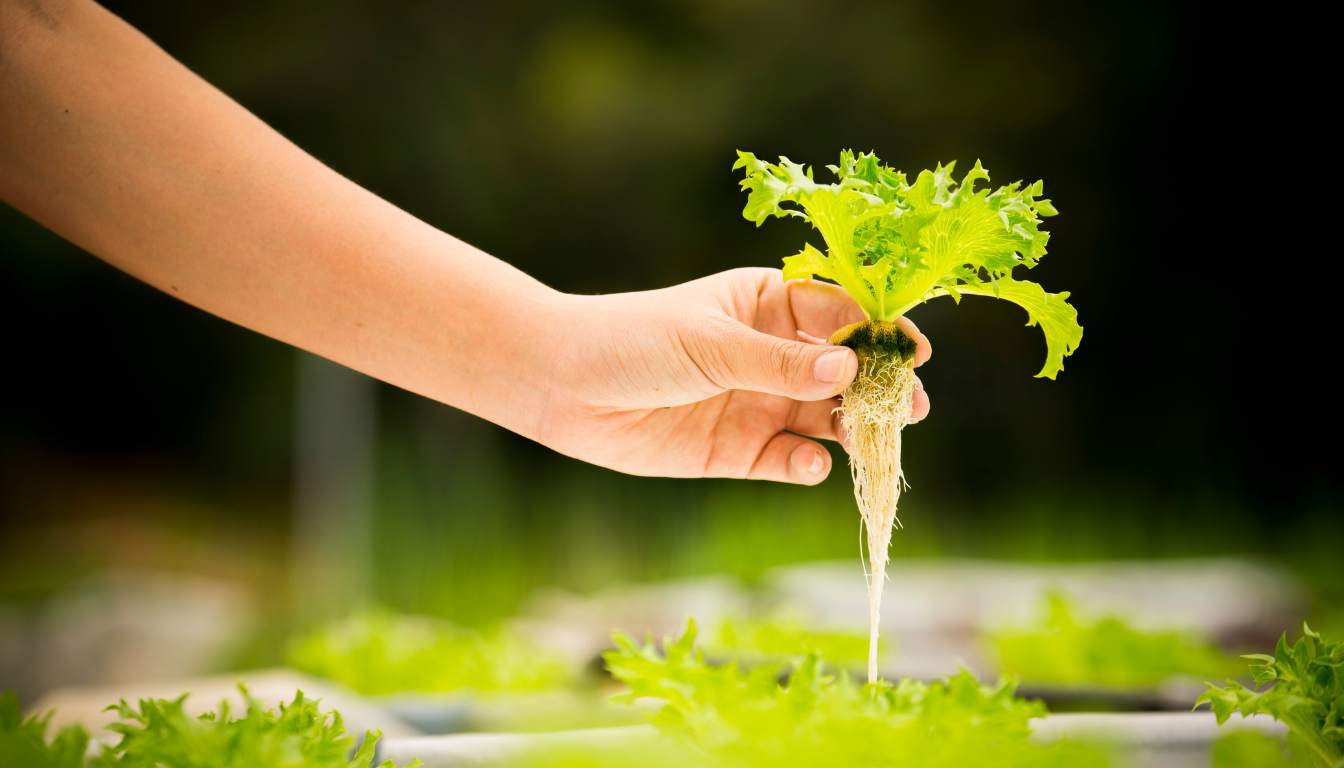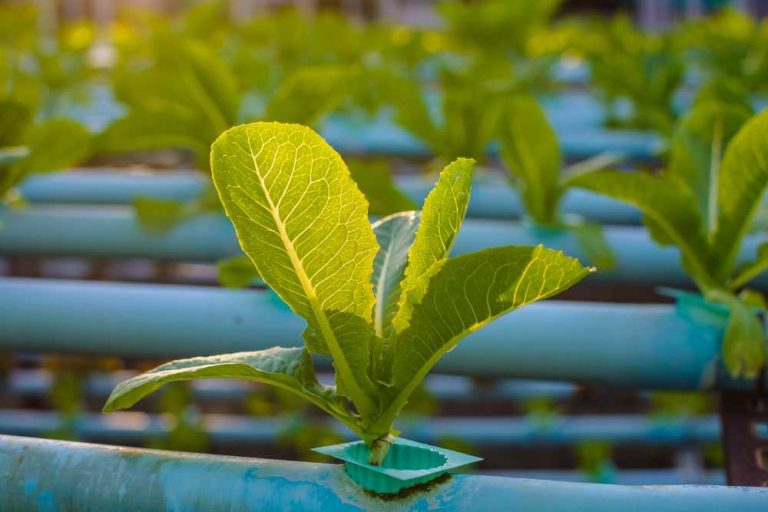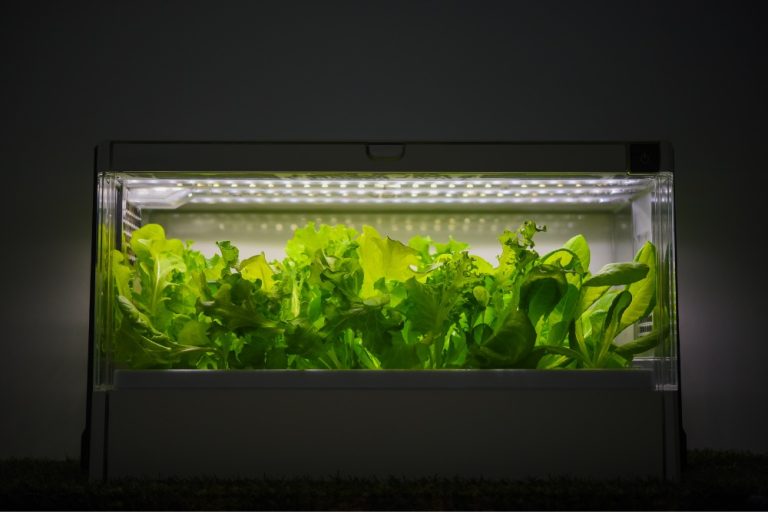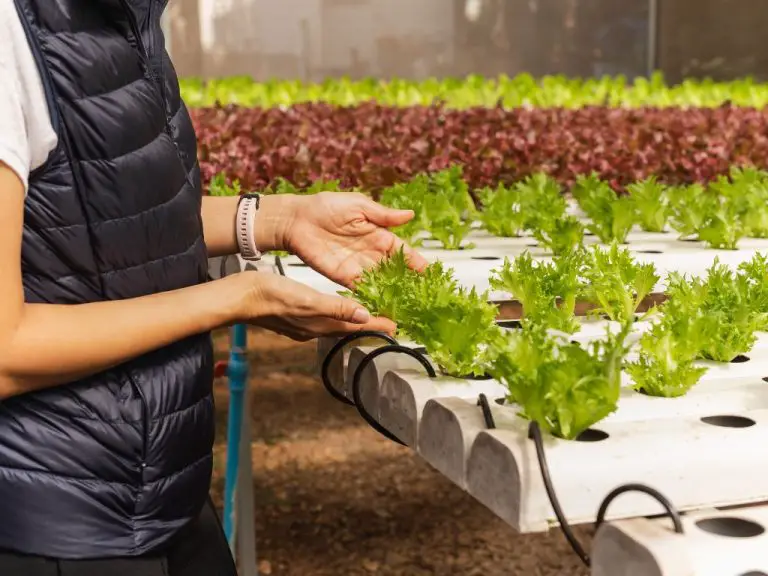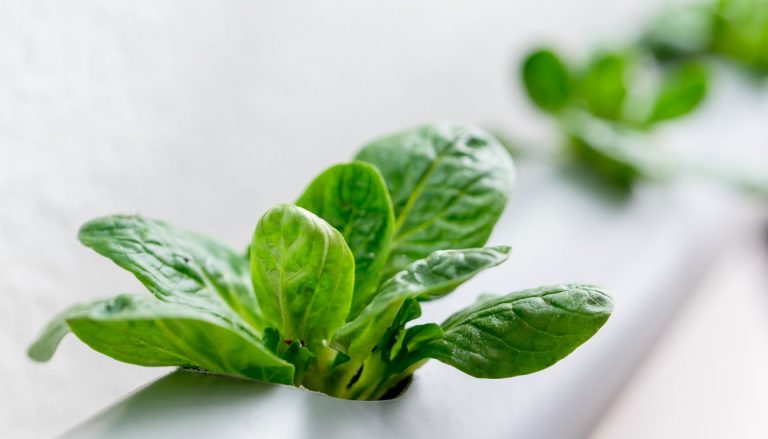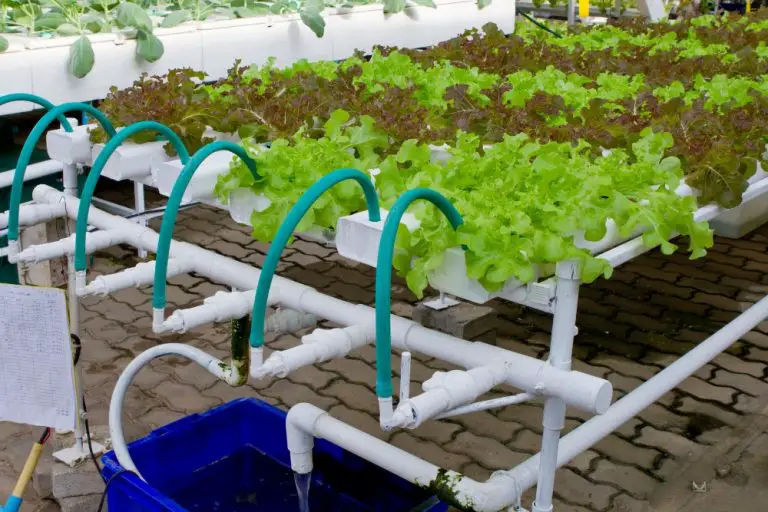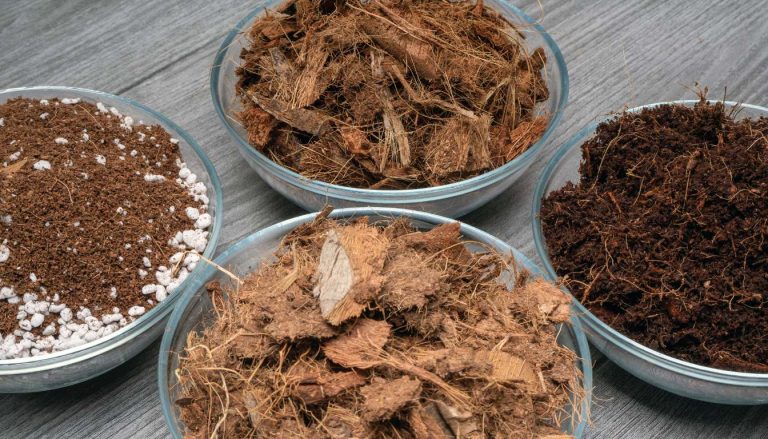How Does a Wick System Work? A Comprehensive Guide
Hydroponics is a fascinating method of growing plants without soil, and one of the simplest and most affordable techniques is the wick system. This self-watering system utilizes the natural process of capillary action to deliver water and nutrients to plants. Let’s explore how does a wick system works and why it is a popular choice for hydroponic gardening.
A wick system is a passive hydroponic system that requires no moving parts or complex technology. It operates on the principle of capillary action, also known as wicking action. This process allows water and nutrients to be drawn up from a reservoir to the plants through one or more wicks.
This hydroponic wick system is particularly suitable for low-maintenance plants like herbs and lettuce. It offers a straightforward and beginner-friendly approach to hydroponics, making it an excellent choice for those new to this innovative gardening method.
Key Takeaways
- The wick system is a simple and cost-effective form of hydroponics, perfect for beginners.
- It utilizes capillary action, also known as wicking action, to draw water and nutrients to the plants.
- This self-watering system is ideal for low-maintenance plants such as herbs and lettuce.
- The wick system requires minimal technical knowledge and has no moving parts.
- It offers a passive solution for hydroponic gardening, requiring minimal energy inputs.
The Working Principle of Capillary Action
Capillary action is a fundamental process that drives the operation of a wick system in hydroponics. It is a natural phenomenon in which water molecules move through narrow spaces, such as tubes or porous materials, due to the adhesive force between the water and the capillary walls.
This adhesive force creates a curved surface, known as a meniscus, at the top edge of the water. As long as the adhesive force is stronger than the surface tension, the water continues to move upwards.
In a wick system, capillary action allows water and nutrients to be drawn up through the wick and into the roots of the plants. As the water is absorbed by the wick, it moves against the force of gravity, supplying moisture to the plant’s root system. This process is crucial for delivering water and nutrients to the plants in a controlled and efficient manner.
How Does Capillary Action Work?
Capillary action occurs due to the combined effect of adhesive forces and surface tension. The adhesive forces between the water molecules and the capillary walls enable the water to “stick” to the walls and move upwards. At the same time, surface tension, which is caused by the cohesive forces between water molecules, helps to maintain the integrity of the water column and prevent it from breaking apart.
Overall, capillary action plays a vital role in the functioning of a wick system, ensuring that plants receive the necessary water and nutrients for healthy growth.
Components of a Wick System
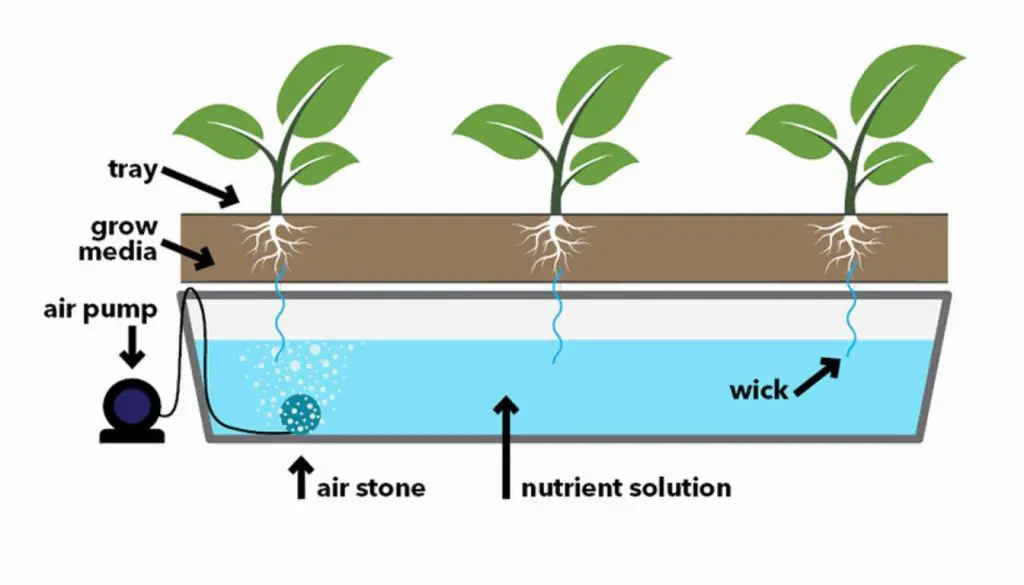
A wick system consists of several key components that work together to create a self-watering and low-maintenance hydroponic setup. Understanding these components is essential for the successful implementation and maintenance of a wick system.
1. Grow Tray
The grow tray is a container that holds the plants and the growing medium. It provides a stable base for the plants and helps to keep the growing medium in place. The size of the grow tray can vary depending on the number of plants you wish to grow.
Read – What is the Medium Used in Hydroponics
2. Reservoir
The reservoir is a container that holds the water and nutrient solution for the plants. It should be large enough to provide an ample supply of water and nutrients to the plants between refills. The reservoir is typically placed beneath the grow tray for gravity to assist in the wicking process.
3. Wicking Material
The wicking material is a crucial component of the wick system as it allows the water and nutrients to travel from the reservoir to the plants. Cotton or nylon rope is commonly used as a wicking material due to its absorbent properties. The wicking material should be positioned in such a way that it reaches from the bottom of the reservoir to the growing medium in the grow tray.
4. Nutrient Solution
The nutrient solution is a vital part of the wick system as it provides the necessary nutrients for the plants to grow. It is important to maintain the right balance of nutrients in the solution and monitor its pH levels regularly. The nutrient solution is added to the reservoir and is drawn up through the wicking material to reach the plant roots.
5. Aeration System
An aeration system, such as an air stone and pump, helps oxygenate the water in the reservoir. This is important for the health of the plant’s roots, as oxygen is essential for proper nutrient uptake and overall plant growth. The aeration system can be easily installed in the reservoir to ensure adequate oxygen supply.
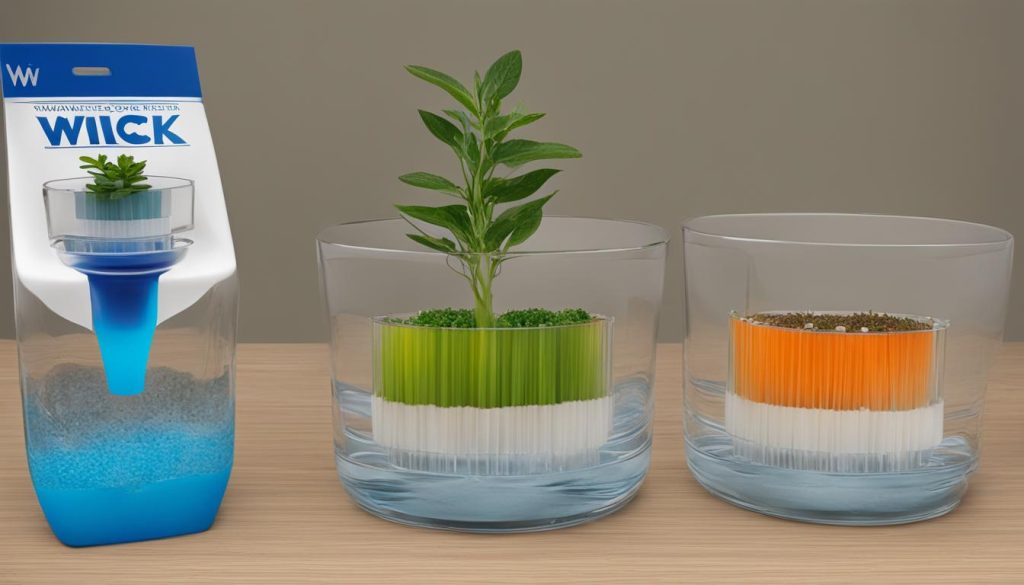
Building a Wick System
Building a wick system is a simple and affordable way to start your hydroponic setup. To construct a wick system, you will need a container for the plant, a reservoir, a suitable wicking material, a grow medium, and a nutrient solution.
The plant container can be a pot or tray, while the reservoir can be any bucket or container that can hold water. Choose a wicking material such as nylon rope or strips of fabric that can efficiently draw the water and nutrients from the reservoir to the plants.
Next, fill the plant container with a suitable grow medium like vermiculite or perlite. These materials have excellent water retention capabilities, ensuring that your plants receive a consistent supply of moisture.
Place the wicking material in the growing medium, ensuring that it reaches the reservoir, creating a pathway for the water and nutrient solution to flow. Once the wicking material is in place, add the nutrient solution to the reservoir. The wicking action will gradually draw up the solution to the plants, providing them with the necessary nutrients for growth.
It is important to fine-tune the length and number of wicks to optimize hydration for your plants. Some plants may require more water, while others may need less. By adjusting the length and number of wicks, you can ensure that each plant receives the appropriate amount of moisture.
Regularly monitor the moisture levels in the growing medium and the nutrient solution in the reservoir, making adjustments as necessary to maintain a healthy growing environment for your plants.
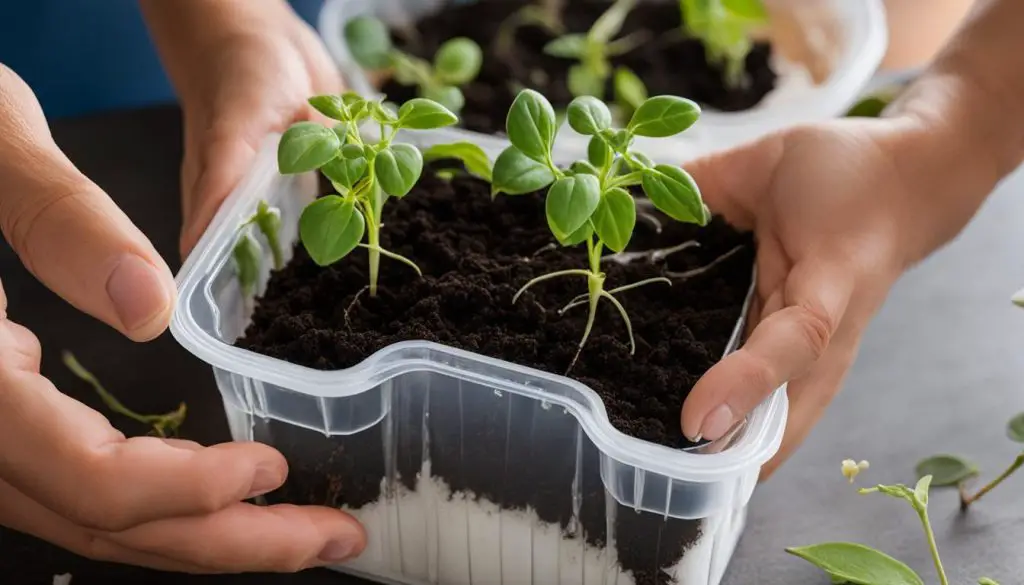
Selecting Wicking Materials and Grow Medium
Choosing the right wicking materials and grow medium is crucial for the success of a hydroponic wick system. There are various options available that provide optimal water retention and nutrient distribution.
When it comes to wicking materials, commonly used options include cotton rope, nylon rope, wool rope, braided polyurethane yarn, and even strips from old clothes or blankets. These materials have excellent absorption properties and are resistant to rotting, ensuring efficient water movement from the reservoir to the plants.
For the grow medium, several choices can thrive in a wick system. Coconut coir, vermiculite, perlite, and soilless mixes are all suitable options. These mediums have the ability to retain water effectively, which is essential in a wick system where water movement is slower compared to other hydroponic systems. They provide a stable environment for the plants to grow and absorb the necessary nutrients.
By carefully selecting the appropriate wicking materials and grow medium, you can maximize the efficiency of your hydroponic wick system. Whether you opt for cotton rope, nylon rope, or other materials, ensure they have excellent water absorption properties. When choosing a grow medium, consider coconut coir, vermiculite, perlite, or soilless mixes to provide optimal conditions for your plants to thrive.
Maintaining the Reservoir and Usable Plants
Proper maintenance of the reservoir in a wick system is essential to ensure the health and vitality of your plants. One important aspect of reservoir maintenance is ensuring a balanced nutrient solution. Over time, the nutrient levels in the reservoir can become imbalanced or depleted, which can negatively affect plant growth. Therefore, it is crucial to regularly monitor and adjust the nutrient solution to maintain optimal plant nutrition.
Aeration of the reservoir is another key maintenance task. Oxygenation of the water is important for the roots to thrive and absorb nutrients effectively. To achieve this, you can incorporate an aeration system, such as an air stone and pump, into your wick system. This will help to oxygenate the water and promote healthy root development, ensuring the overall success of your hydroponic setup.
Choosing Suitable Plants
When considering which plants to grow in a wick system, it is important to select varieties that are well-suited to this type of hydroponic system. Small herbs, such as basil, mint, or parsley, thrive in wick systems due to their low water requirements.
These herbs are not water-hungry, making them ideal candidates for this type of setup. Similarly, lettuce varieties, like leaf or butterhead lettuce, are also suitable for wick systems. These plants can thrive with the slower water delivery provided by the wick system, ensuring consistent and healthy growth.
Pros and Cons of a Wick System
A wick system offers several advantages that make it an attractive option, particularly for beginners in hydroponics. One of the main advantages is its beginner-friendly nature. The wick system is simple to set up and requires minimal technical knowledge, making it accessible to those new to hydroponics. Additionally, once the system is in place, it requires low maintenance. Since there are no moving parts or complex mechanisms involved, the wick system is relatively hassle-free to maintain.
Another advantage of the wick system is its water and energy efficiency. The system operates on the principle of capillary action, which draws water and nutrients from the reservoir up to the plants through the wicks. This process is slow and controlled, resulting in minimal water wastage. Additionally, the wick system does not require any electricity or pumps to function, making it energy-efficient and cost-effective.
However, it is important to note the limitations of a wick system. One of the main drawbacks is its limited plant options. The wick system is best suited for smaller plants with low water and nutrient requirements, such as herbs and lettuce.
Plants with higher water demands, like tomatoes, may not thrive as well in this system. Furthermore, the wick system can be inefficient in delivering nutrients to the plants. Over time, nutrient build-up in the growing medium can occur, affecting the overall health and growth of the plants.
Conclusion
The Wick system is an excellent choice for beginners looking to explore the world of hydroponics. With its simplicity and low cost, it provides an easy entry point into hydroponic gardening. The wick system’s reliance on capillary action makes it a practical option, requiring minimal technical knowledge or equipment.
One of the key benefits of the wick system is its suitability for growing fresh herbs. Whether you want to have a small herb garden in your kitchen or enjoy the convenience of having fresh herbs at your fingertips, the wick system delivers satisfying results. The slow water delivery and lower nutrient efficiency of the system are well-suited for the water and nutrient needs of herbs.
While the wick system may have some limitations, such as limited plant options and potential nutrient build-up over time, its advantages should not be overlooked. The beginner-friendly nature, low maintenance requirements, and water and energy efficiency make it an attractive choice for those new to hydroponics. So, if you’re a beginner looking to dip your toes into hydroponic gardening or simply want to grow fresh herbs, give the wick system a try!
FAQ
How does a wick system work?
A wick system utilizes capillary action to draw water and nutrients from a reservoir to the plants through one or more wicks. The water is absorbed by the wick and transported to the plant’s roots, providing hydration and nutrients.
What is capillary action?
Capillary action is a natural phenomenon where water molecules move through narrow spaces, such as tubes or porous materials, due to the adhesive force between the water and the capillary walls. This creates a curved surface, known as a meniscus, which allows the water to move upwards.
What are the components of a wick system?
A wick system consists of a grow tray to hold the plants and growing medium, a reservoir for the water and nutrient solution, a wicking material to transport the water to the plants, and an aeration system to oxygenate the water in the reservoir.
How do I build a wick system?
To build a wick system, you will need a container for the plants, a reservoir for the water, a suitable wicking material, a growing medium, and a nutrient solution. Connect the wicking material to the reservoir, place it in the growing medium, and add the nutrient solution to the reservoir. The wicking action will draw the solution up to the plants.
What can I use as wicking materials and grow medium?
Common wicking materials for a wick system include nylon rope, cotton rope, and strips from old clothes or blankets. Suitable grow mediums include coconut coir, vermiculite, perlite, and soilless mixes. These materials have good water retention abilities, which are important for the slower movement of water in a wick system.
How do I maintain the reservoir and what plants are suitable for a wick system?
Regular maintenance of the reservoir involves topping it up and refreshing the nutrient solution to maintain optimal nutrient balance and prevent toxic build-up. An aeration system with an air stone and pump can be used to oxygenate the water. Small herbs and non-fruit vegetables like lettuce are best suited for a wick system, while water-hungry plants like tomatoes are not suitable due to the system’s slower water delivery.
What are the pros and cons of a wick system?
The advantages of a wick system include being beginner-friendly, easy to set up and maintain, and requiring minimal energy inputs. It is also water-efficient and suitable for smaller plants with low water and nutrient requirements. However, the system is less efficient in delivering nutrients, has limited plant options, and may experience nutrient build-up in the grow medium over time.
What are the benefits of a wick system?
A wick system serves as a great introduction to hydroponics for beginners, offering ease of setup and maintenance. It is a cost-effective option that provides effective results, particularly with small herbs and lettuce. Even after upgrading to more advanced systems, a wick system can still be used for growing fresh herbs in a kitchen or small-scale gardening.
- 20+ Chic Boho Bedroom Ideas for a Cozy and Stylish Retreat - June 20, 2024
- 12+ Modern Boho Living Room Ideas to Create a Unique Oasis - June 10, 2024
- 10 Stunning Canopy Bed Ideas for a Dreamy Escape - May 16, 2024

